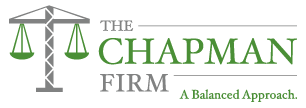On September 24, 2019, the Department of Labor issued a final rule updating the earnings thresholds necessary to exempt executive, administrative, and professional employees from the minimum wage and overtime pay requirements of the Fair Labor Standards Act (FLSA).
Employers need to be aware of the following notable points from this final rule:
- Workers who do not earn at least $35,568 a year ($684/week) would have to be paid overtime, even if they’re classified as a manager or professional. This is up from the old threshold of $23,660 or $455/week.
- The special rule for highly compensated employees would require workers to earn a total annual compensation of at least $107,432 ($684 of which must be paid weekly on a salary or fee basis). This is up from the old threshold of $100,000.
- Nondiscretionary bonuses and incentive payments (including commissions) paid on an annual or more frequent basis may be used to satisfy up to 10 percent of the standard salary level.
- No changes are made to the duties tests under this rule.
- The final rule is effective Jan. 1, 2020.
Unlike the prior rule proposed under the Obama administration (which never took effect due to court challenges), this rule does not increase the threshold as drastically and does not provide for automatic increases to the salary thresholds year over year. The Department of Labor intends to propose updates to the salary threshold regularly to ensure that these levels continue to provide useful tests for exemption, but those updates would not be automatic and would continue to require notice-and-comment rulemaking.
Employers must remember that there is more to the analysis than simply meeting the minimum salary thresholds. The duties tests must also be analyzed to ensure each exempt employee’s job duties properly fall within the classifications of the applicable exemption. Here’s a quick reminder of the exempt categories:
- Executive exemption. The employee’s primary duty must be managing the business or a department or subdivision of the business. The employee must customarily and regularly direct the work of at least two employees and have the authority to hire or fire workers (or the employee’s suggestions and recommendations as to hiring, firing, or changing the status of other employees must be given particular weight).
- Administrative exemption. The employee’s primary duty must be performing office or nonmanual work that is directly related to the management or general business operations of the employer or the employer’s customers. The employee’s primary duty also must include the exercise of discretion and independent judgment with respect to matters of significance.
- Professional exemption. The employee’s primary duty must be to perform work requiring advanced knowledge in a field of science or learning that is customarily acquired by prolonged, specialized intellectual instruction and study.
Of the three white-collar exemptions, the administrative exemption is probably the least straightforward and often creates the most challenges for employers. The most common misconception involves the required level of discretion and independent judgment on matters of significance necessary to qualify for the administrative exemption. The relevant DOL fact sheet explains that the “exercise of discretion and independent judgment” involves the comparison and the evaluation of possible courses of conduct and acting or making a decision after the various possibilities have been considered. Basic non-manual office work by an ‘administrative assistant’ doesn’t meet this duties test.
Now’s the time to plan for the January 1, 2020, rule implementation. If you need help determining whether your employees are properly classified under this new rule—or for any other employment law regulatory compliance needs—contact The Chapman Firm for personalized analysis and professional guidance.
Erik Moskowitz is a commercial litigator and employment lawyer at The Chapman Firm PLLC. Erik holds a SHRM-CP certification and advises businesses of all sizes on HR compliance and litigation avoidance techniques.
